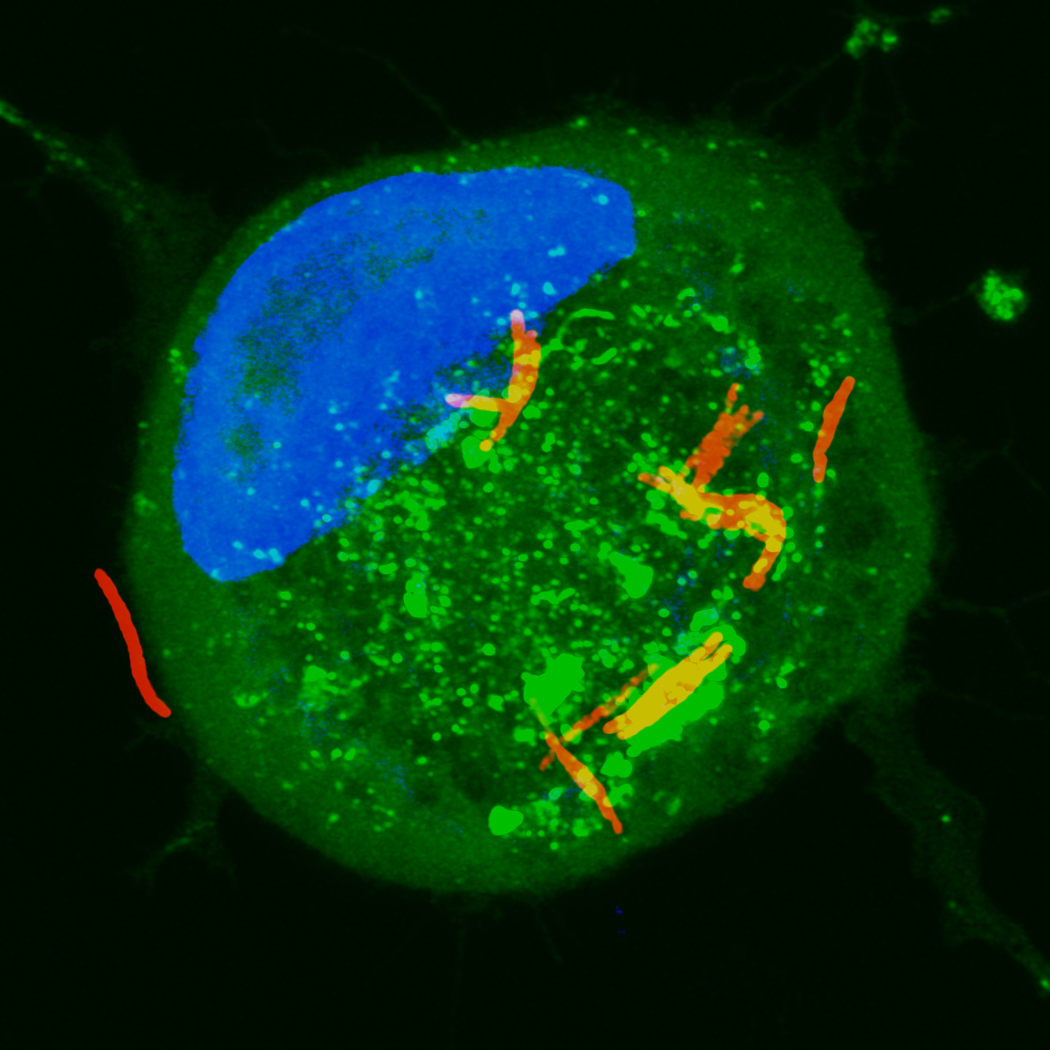Main Results
Chapter summaries
The four chapters presented here are the main body of this dissertation. In each chapter, we offer our findings regarding the roles of sphingolipids (or all lipids) during Mtb infection.
Breaking and entering
In this chapter, we explore sphingolipids’ roles during the phagocytosis of Mtb. We find that sphingolipid synthesis, particularly that of sphingomyelin, is required to efficiently uptake bacterial particles. In characterizing the activation of the phagocytic signaling pathway, we find that sphingolipid depletion significantly alters the dynamics of the phagocytic receptor upon binding an Mtb bacillus. This co-authored chapter was published in mBio in 2021.
Sealing the Gaps
Here, we assess how sphingolipids influence the lifecycle of Mtb after entry into the host cell. We find that sphingolipid-deficient cells are sensitized to Mtb-induced endosomal damage and are deficient in membrane repair. We find that the loss of sphingolipid production in the host cell enables the bacteria to replicate more readily. These results are expected to be submitted imminently for review.
Living off the Fat of the cell
In this chapter, we investigate the effects of Mtb infection on the lipid composition of the host. We compare pathogenic and attenuated Mtb strains in search of signatures of Mtb machinations. Among many findings, we report that diacylglycerides are upregulated during all mycobacterial infections but that triacylglycerol production is only upregulated during pathogenic infection. Further, we find that antimicrobial lipids such as lysophospholipids and plasmalogens are significantly depleted during pathogenic infection. In contrast, these lipids are enriched during attenuated infection – suggesting that pathogenic Mtb directly subverts these antimicrobial efforts in the cell.
An Affinity for Sphingolipids
Finally, we use synthetic analogs of sphingolipid precursors to identify sphingolipid-interacting proteins during Mtb infection. We find significant differential interaction between infected and uninfected cells – including among several previously reported sphingolipid interactors. Mtb infection drives the loss of interaction with many endosomal and lysosomal proteins, suggesting dysregulation of these compartments. We also observe significantly differential enrichment of ribosomal, proteasomal, and chromatin-remodeling proteins – suggesting a dramatic reorganization of the protein content of the cell.
